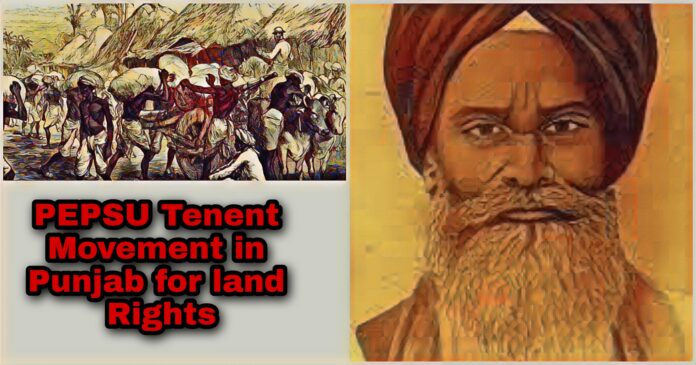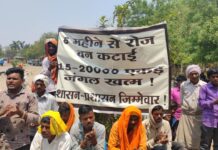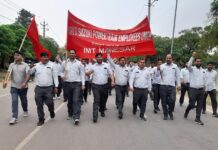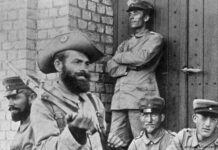Pepsu Tenant Movement or the Muzara Peasants Movement was a revolt of the sharecroppers of eight Princely states, Patiala and East Punjab States Unions, for land ownership rights. Muzara means share-cropping, where a landowner leases out a part of land to an agricultural worker or tenant, who cultivates in return for a predetermined share of the produce.
Between 1708 to 1715, Baba Banda Singh Bahadur, a Sikh warrior, had led Sikh uprisings against the Mughal empire after the death of the Sikh guru, Gobind Singh and had abolished the Zamindari system of the Mughal era. However, in 1793, Charles Cornwallis, who was then the commander-in-chief of British India, re-established the zamindari system in several areas under the Permanent Settlement Act.
In the 1870s, the Maharaja of Patiala implemented the Biswedari or big landlord system, which appointed biswedaris as local authorities of villages. The biswedaris, mostly government officials and close kin of the Maharaja, gradually took full possession of lands and reduced the original owners to muzaras or tenants. These Muzaras had to pay batai or share rent to their landlords, consisting of half of their crop and the landlords often overestimated the crop yield to justify taking a larger share.
Also read: Why Labour Code Bills are more Dangerous than the Farm Bills?
The Muzara movement of 1930 to 1953, fought in 784 villages was an organised effort and had its roots in the Praja Mandal movement of the 1920s. The Praja Mandals were localised peoples’ movements to demand an end to the Biswedari system and for democratic rights from the British and the native aristocracy. The movement started when tenants in the two villages of Rajomajra and Bhadaur began refusing payments of batai to their landlords in May 1930. Many had lost their hereditary property rights within their own lifetimes. The tenants began to hand over their crops’ share only under police supervision and gradually in several other villages landlords increasingly had to rely on police force to collect batai. Some tenants destroyed their own crops in order to avoid paying their landlords.
What exactly happened?

In 1930, under the primacy of the British Raj, Maharaja Bhupinder Singh refused to tolerate political dissent and jailed anyone who publicly spoke out against the government. Sewa Singh Thikriwala, then leader of the Praja Mandal, began organizing tenants in several Biswedari villages, encouraging them to withhold payment of batai to landlords. Praja Mandal members Bhagwan Singh Longowalia and Jagir Singh Joga also helped to organize and lead the resistance. Thikriwala was arrested and tortured several times, the last time in November 1930 and he died in jail four years later. Longowalia was arrested in 1933 and he died in prison in 1935 after a prolonged hunger strike.
The Maharaja enacted a law in 1932, making any form of political meeting illegal, but tenants continued to organize and meet in secret or across state borders. Police systematically repressed tenants, forcibly confiscating their crops for batai payments, and imprisoning resisting tenants. The high level of repression and lack of organization among villages made it difficult to maintain resistance efforts. Later a violent confrontation between police and tenants on November 25, 1937 in the village of Qila Hakiman publicized the plight of tenants. Three hundred to four hundred tenants were peacefully protesting, asking police not to take away their crops when police and landlords opened fire. The state government made an official inquiry into the incident.
The magistrate condemned the tenants for their defiance of authority and exonerated police of all charges of excessive use of force. In response, the Praja Mandal formed a counter committee to investigate the issue and came to the conclusion that the tenants were unarmed and peaceful, and landlords had illegally participated in the shooting. This report was printed and distributed.
Also read: The First Worker’s Revolution: Remembering the Paris Commune on its Sesquicentennial
Formation of Muzara Committee
Later tenants in 30 bullock carts traveled to Patiala city to protest the forcible confiscation of batai. In 1938, tenants from villages across the state formed the Muzara Committee to promote further organization among villages. By 1939, refusing to pay batai had become common in most villages and the state had to direct an additional police force to collect batai. During this period several petitions were sent to the Maharaja to restore property rights of peasants,several villages refused to give batai and boycotted landlords socially, refused to work for them and destruction of crops if police tried to take them by force.
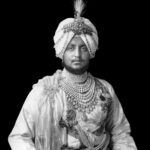
In the face of increased police repression, the campaign died out, until 1942, when they began to align themselves with the Communist Kisan Party. In 1945, they organized a conference to protest a pre-planned looting and beating of tenants in villages by police and landlords. As a result of this peasants clashed with biswedaris and police in village Dhandoli Khurd. Police opened fire and killed two tenants. Soon after, tenants in villages of Bakshiwala and Dharamgarh began forcibly seizing landlords’ properties.
During the following three years, police reported many incidents of clashes by muzaras in some villages as their resistance to paying batai became more aggressive.
Soon after August 15, 1947, the tenants continued to resist paying landlords as the transitioning government failed to pass agrarian reforms. Landlords had begun to employ armed gangs to terrorize the tenants into submission. The muzaras organized resistance to these gangs also.
During this period struggling tenant farmers were organised under the leadership of the Red Party and village Kishangarh, became the centre of struggle. In this village, the goons of the feudal lords and the police carried out murderous attacks on fighting farmers and finally on March 19, 1949 the army was deployed, martial law was imposed. In all four, tenants were killed in this brutal incident and hundreds were arrested.
This battle of Kishangarh was a decisive event in the fight against the Biswadari feudal system.
In 1951, the newly elected Congress ministry formed the Agrarian Reforms Inquiry Committee with the purpose of addressing the grievances of the tenants and implementing agrarian reforms. The committee enacted the PEPSU Tenancy Act in January 1952 that protected tenants against eviction from their lands while continuing search for a more permanent solution. In April 1953, the government passed the PEPSU Occupancy Tenants Act, which allowed the tenants to become owners of their own land and effectively abolished the biswedari system.
Gauri Lankesh News Desk received this article by the Samyukta Kisan Morcha

















